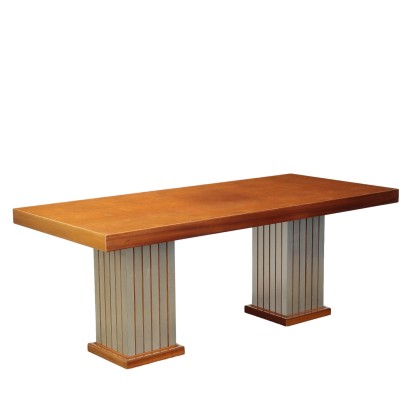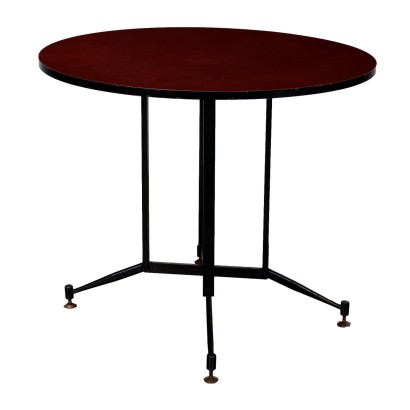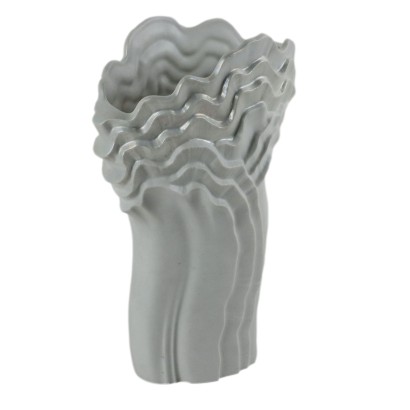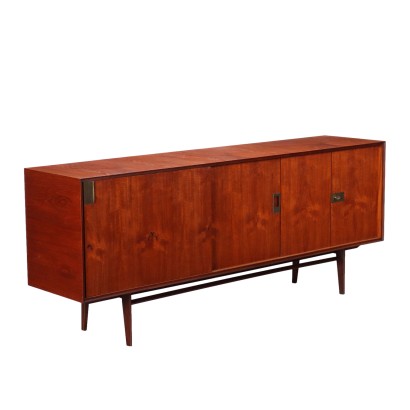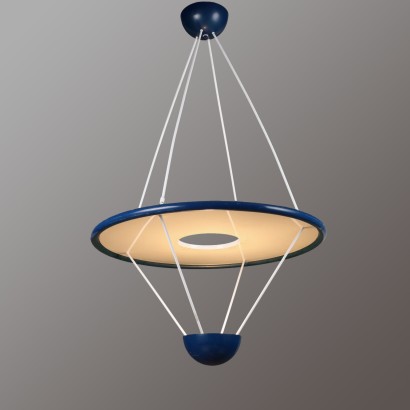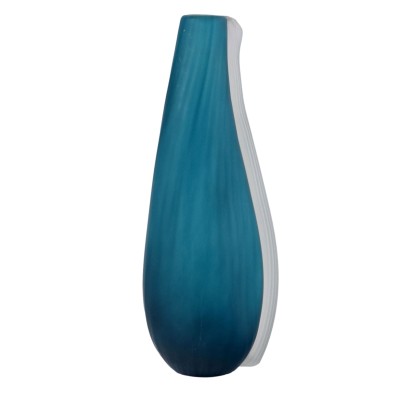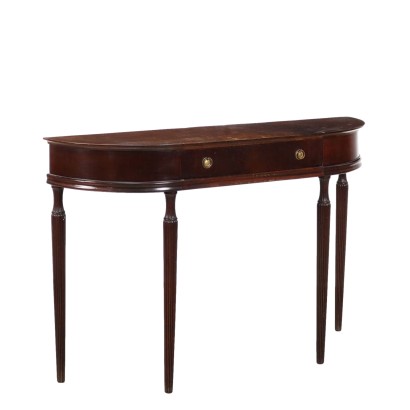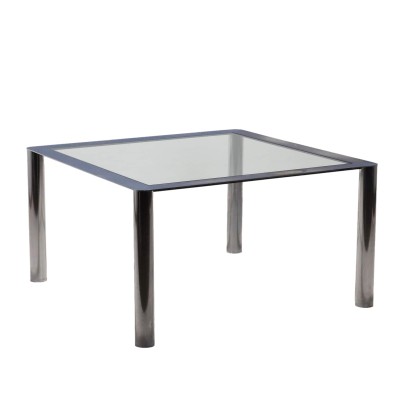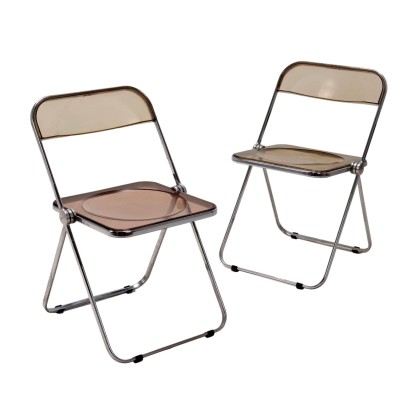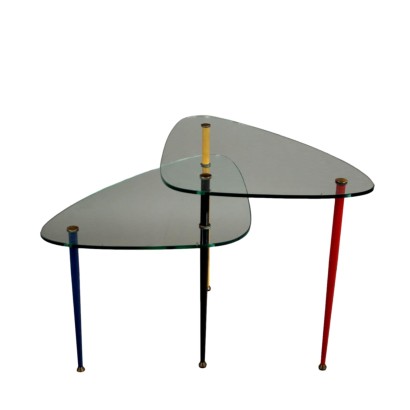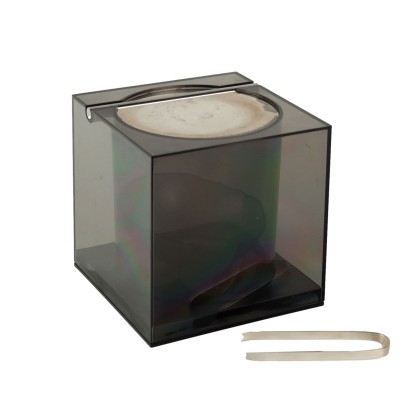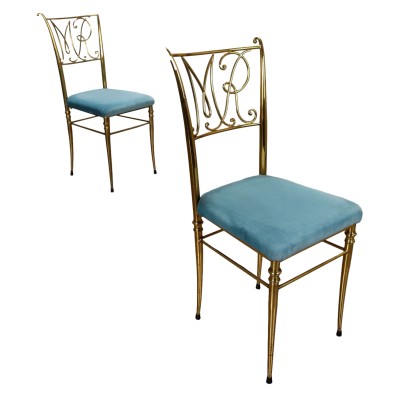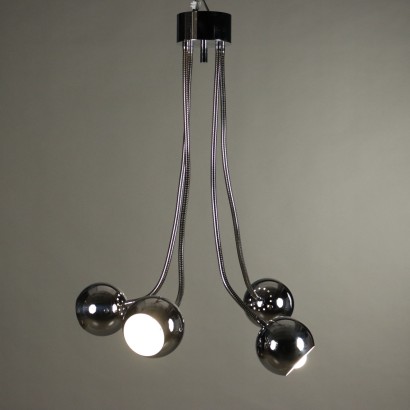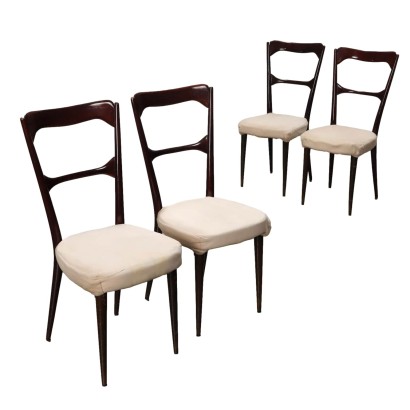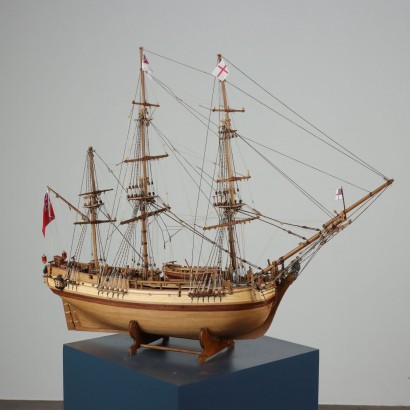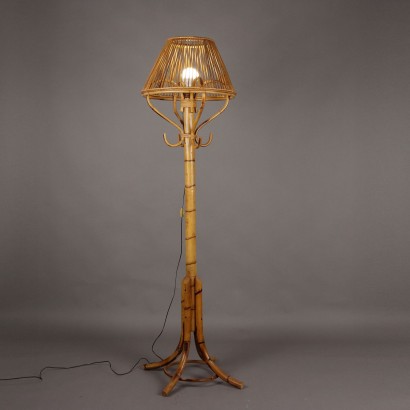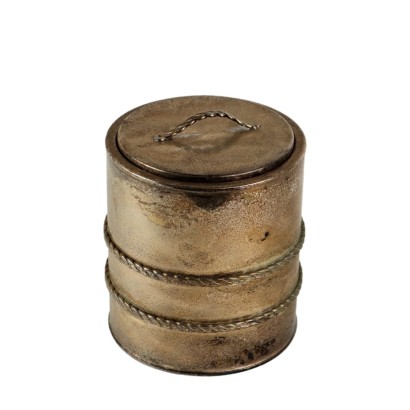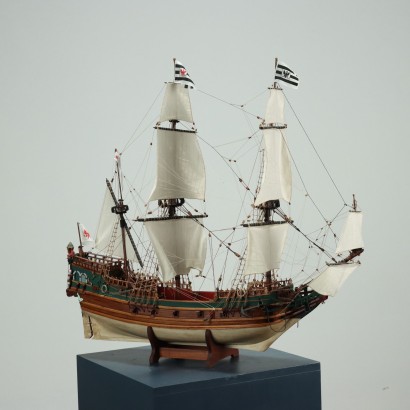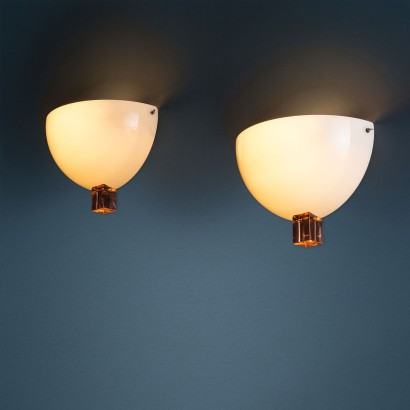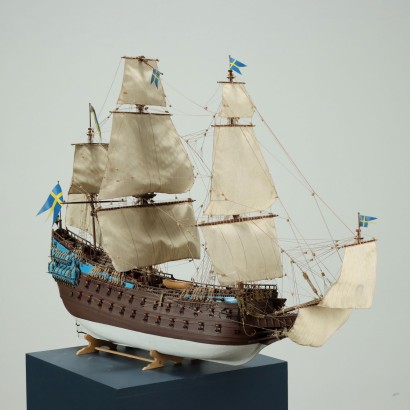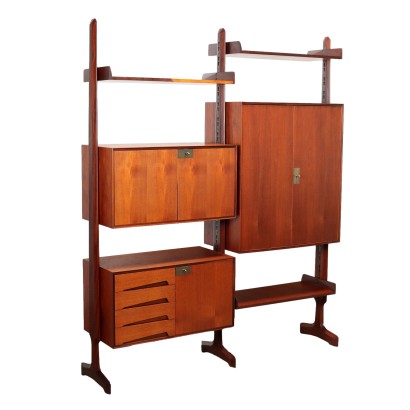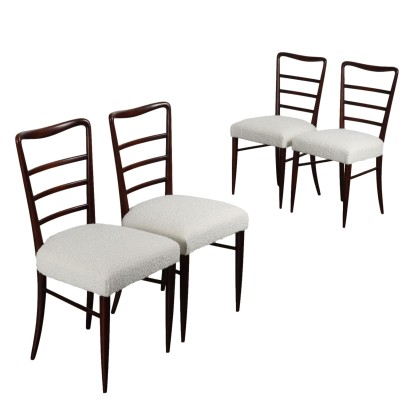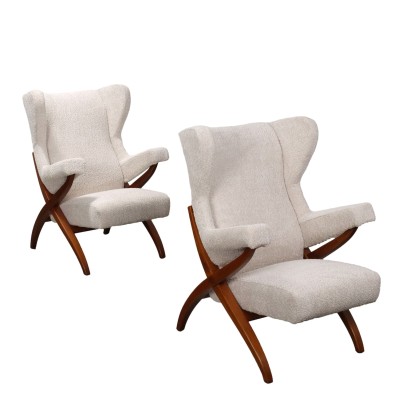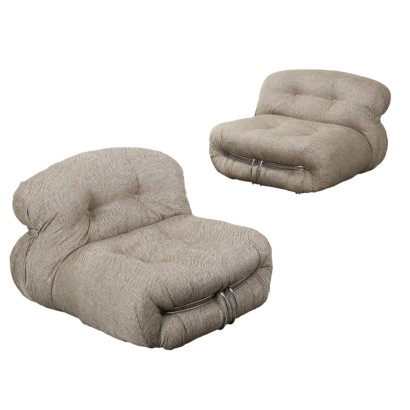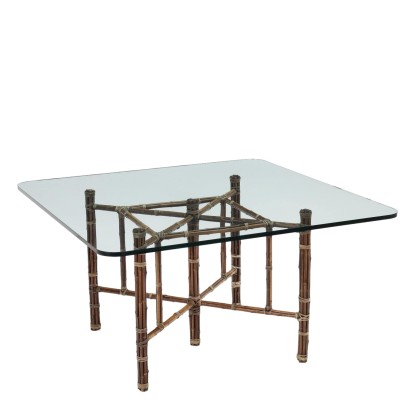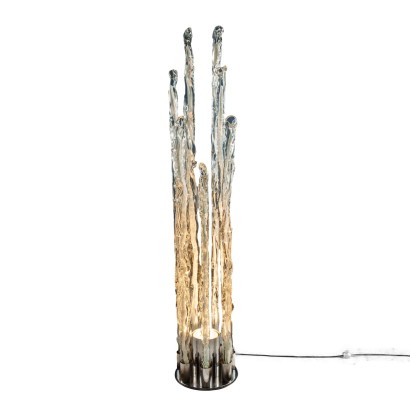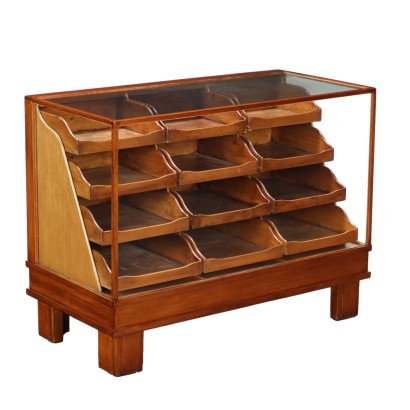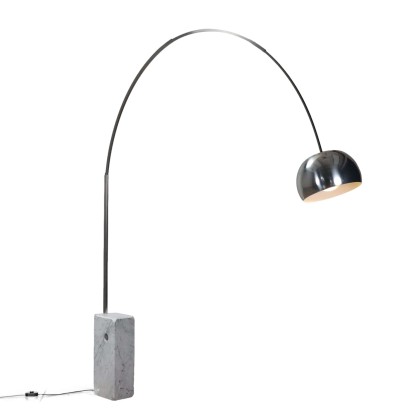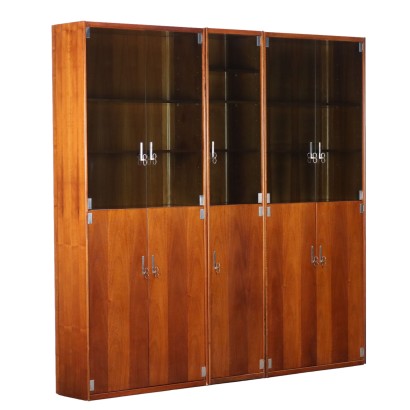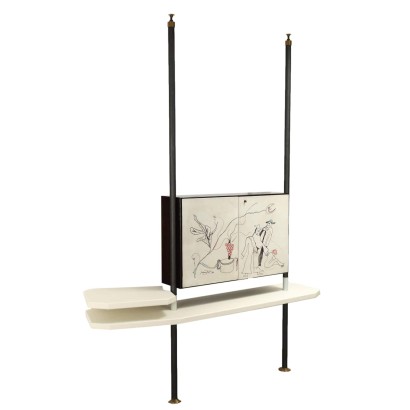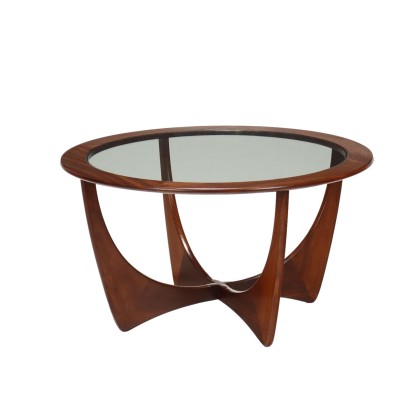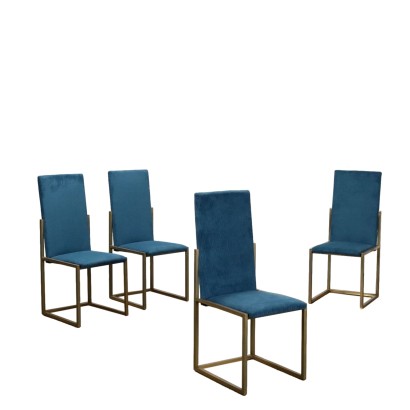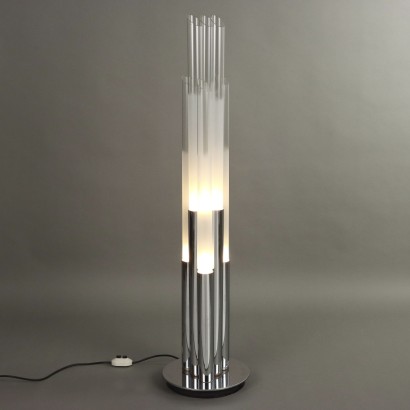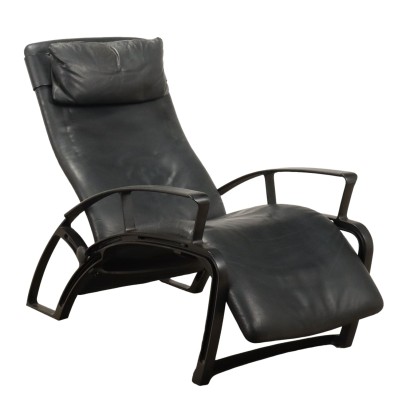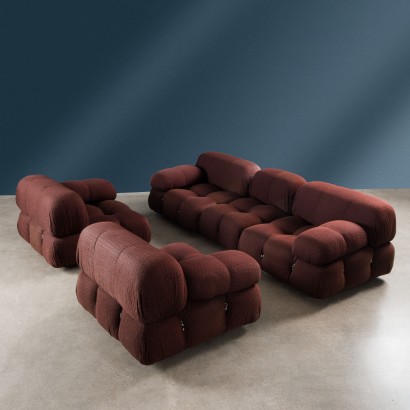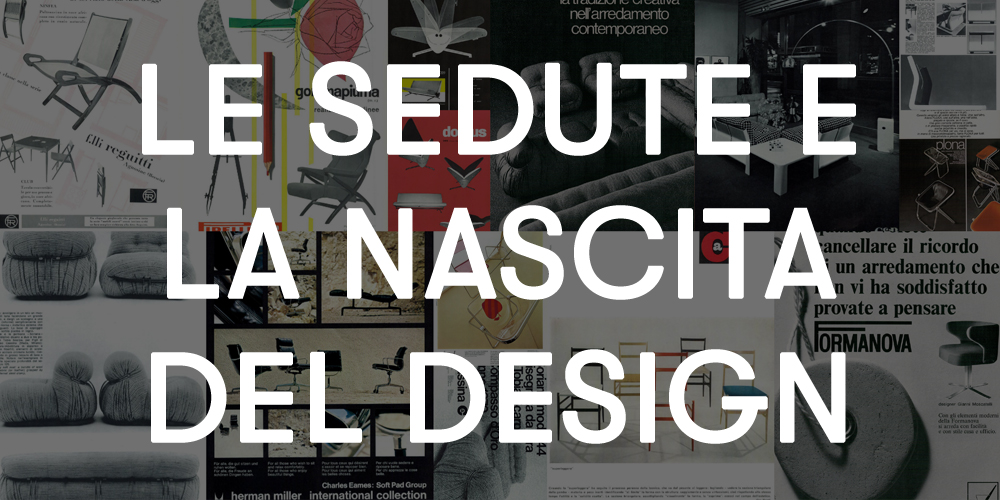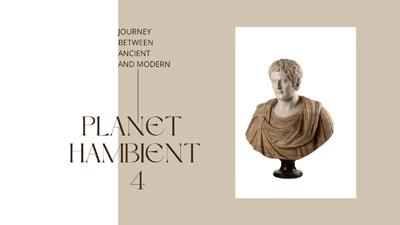We buy and sell Modern and Design Furniture : furniture, chairs, armchairs, tables, desks, sideboards and much more from the 1930s to the 1970s
Index
- What is modernism?
- Modern art, design, vintage, retro: let's be clear
- Where to buy modern art? Online, but not only
- What are the main modern furniture?
- Design seats
- Designer chairs
- Designer armchairs
- Designer sofas
- Modern antique tables and desks
- Designer tables
- Design coffee tables
- Designer lighting
- Modern wall light
- Modern floor lamps
- Designer table lamps
- Designer chandeliers
- What are the best years in the history of design and modern art?
- 30s and 40s
- 50s
- 60's
- 70's
- Who are the greatest designers in history?
- How does the sale of modern furniture work?
Modernism
What is modernism?
The term modernism was born as a neologism along the lines of the word antiques because, like the latter, it refers to the collecting, trade and study of all those furniture and objects in general which bear witness to research by art and beauty also in the world of furniture.When we speak of modern art, however, we are certifying a caesura with respect to antiques because it is not the same. the production techniques of modern antique furniture have their own innovative characteristics: mass industrial production and the concept of design, in which it is; the figure of the architect is central, who conceives and designs take the place of the ability to artisanal and artistic technique ofebanista in the ancient workshop.
In fact, the '900 was a century of great technological innovations, often born in the military context of the world wars, and the accumulation of such knowledge and technologies was the basis of the third industrial revolution. The years of the economic boom, after the Second World War, saw the emergence of industrial design. Thanks to new technologies, industrial products became more and more; accessible and within everyone's reach. In tune with the industrial development, it changed; even common taste, in opposition to the classical style and baroque that characterized the 19th century. Concepts such as functionalism and rationalism spread in general culture, the new modern construction methods dictated the basis of the new aesthetics. In Italy, in particular, the drive towards modernization and industrialization comes a bit late. late compared to other countries, but has a very strong propulsion in the 50s u>, with peculiarities; amazing. If, on the one hand, we arrive at the production of objects for mass consumption for the first time, on the other hand, the important and deeply rooted local tradition in the decorative arts and, in general, the Italian taste for beauty, in any case preserve the of exclusivity & agrave; and beauty also in serial production. The Italian design of the 1950s is therefore; the happy synthesis of the economic and technological thrust of the third industrial revolution with the profound aesthetic sense that, in Italy, was born and developed in the artisan workshops starting from Renaissance. Here, therefore, is modern art: a perfect combination of modernity, design, industry, on the one hand, and architecture, tradition, art, on the other.
In summary, the industrial production coming mainly from the second half of the world is defined as modern art. of the ‘900; without a doubt the period most; innovative is; between the 1950s and the 1970s, with probably a peak in the 1960s, however; artistic trends are born and develop starting from the thirties and '40s and continue at least throughout the 80s. Obviously, there is a a whole story made up of brilliant people and specific socio-economic conditions that has led to an evolution in the style and techniques for making furniture of modern antiques. It is a fascinating story that has given us products that leave us speechless and Di Mano In Mano Modern Design Milan< /a> is the right place to discover it and touch it! Keep reading and following us to find out what it is! modern antiques.
Modernism, design, vintage, retro: let's clarify
The word modern comes from the mold of the word antiques and refers to the study and collecting of furniture and furniture made between the 1930s and, generally, the 80s of the twentieth century with some peculiar characteristics. Modern antique furniture arises from the meeting of different instances: a centuries-old artisan tradition in the decorative arts, the industrial organization of mass production, the availability of various materials. of new materials and technologies, the search for beauty and exclusivity; even in objects and everyday furniture, a fertile environment for debate between designers … and the collaboration of all these factors!
Vintage is; a term which, on the contrary, derives from the French for vintage and indicates the “best vintages”. Therefore, when we speak, for example, of vintage objects from the 50s we are referring to best products of stylistic research created in those years and by now become classics. Similarly, vintage objects from the 70s are those objects that have made history and have marked the style of that decade. Finally, it must be kept in mind that Vintage is also used, in a more general sense; technical, high quality clothes; dating back to the same glorious period of the modern art.
The very common term design today indicates a particular modality; of design of design objects and design furniture in general which strives to combine design in series, utility; and the creative pursuit of beauty. In this sense, one can use the word design to refer to all furniture designs that were built with at least partially industrial processes, and therefore cover a time span ranging from ’800 nowadays.
Finally, the term retrò simply indicates a object, a piece of furniture or a dress that has a taste and a style which refers to to the past decades, regardless of its realization even more; recent if not contemporary.
Where to buy modern antiques? Online, but not only
Buying a modern piece of furniture is not an option. a trivial operation: since these are products that are now out of production, it is not necessary to do so. always easy to find them in a short time or count on a wide choice. With the Di Mano In Mano Milano catalogue, these difficulties, if not overcome, are greatly reduced: we have one of the most popular; important and stocked modern antiques shops in Milan, in Viale Espinasse 99, also in collaboration with the brand Spazio900 , and we count on an online catalog of modern antique furniture that we update daily with new arrivals< /u>.
Design in Milan has one of its historical centers and we, who have been dealing with used furniture and objects for decades, can testify to it and try to honor it. We had started with a small modern antiques market, but, over the years, discovering and appreciating more and more; the world of modern art and thanks to the possibilities; of the online world for design, we have expanded our activity; and now we have a huge online modern antiques catalog with hundreds of pieces that anyone who visits our modern antiques shop in Milan or the Cambiago showroom can see “live".
The years of the economic boom were also the years of the apex of modern art and their center is was undoubtedly Milan. During that time, there was a synergy between skills and knowledge. artisans, industrial development, new sensibility; artistic and ancient tradition decorative which made Milan the capital of < strong>50s modern art. For this, our activity is of rediscovery and enhancement of things could not fail to focus on this aspect. For thirty years, at least, that is; up to the entire golden age of design, the ferment and creativity of the world. some designers have found the ideal place in which to develop in city studios. In fact, the 70s modern design still sees active new creatives and established masters in our city, still producing pieces that have made the history of design and that you can find in our design shop in Milan.
In recent years, with the development of the digital market and online trading, it has become more and more more and more It's easy to build your own online design furniture , quickly compare various online design furniture , and find the one that matches exactly what you're looking for. Our online modern antiques shop is one of the best brands in the world. built precisely on these needs: you can search for furniture by selecting the type or material or designer you prefer, and buy directly or contact customer assistance to make an appointment in one of our modern antiques shops to see and physically touch the designer furniture that had captured you online.
What are the main modern furniture?
We can say that the modern art period is not characterized by the invention of new types of furniture, but more; what else for the research and creation of new forms for furnishings. The modern furniture can therefore be divided into the traditional categories, because; what distinguishes them & egrave; especially the study of design related to their function and the new materials and production processes available. The genius of the architects who designed these fascinating pieces of furniture that go by the name of modern furniture, as we will see, is revealed above all in the new concepts and new structures for tables and desktops, seats, lighting, furniture in general, objects, accessories and complements. But let's see each category in detail:
Design chairs
one of the largest; classic and iconic products, when it comes to modern antiques, are the modern antique chairs, whether it is the 40s chairs or you appreciate design sofas, this is the ideal choice for you. one of the areas in which architects have expressed the most; force their creative flair. The first hints of a new style can already be found; in the 1940s armchairs and in the 1940s wooden chairs, but, in general, starting from the the 50s claimed; progressively the new taste of beauty, more; modern. Here in detail:
Design chairs
Most likely this is the same. the history of design chairs has its origins in the 19th century with the 214 chair by Thonet, designed, precisely, in 1859 by Michael Thonet and also known as coffee chair. This chair is still considered to be the very first successful industrial product in the world today, as well as being one of the most popular industrial products in the world. the origin of the history of modern furniture. Its manufacture was based on an innovative technique for that time: the steam bending of solid wood, which Thonet managed; to perfect for the mass production. What's more, the 214 chair by Thonet could already be used; shipped disassembled into different components to be assembled, occupying very little volume. Finally, the last feature that makes it prototypical for all modern antique chairs it is its simple and light line. For example, explicitly inspired by this, Vico Magistretti at the end of the 80s created a series of design seating, starting from the basic Silver model in polypropylene and aluminum. In fact, there are different versions of Silver by Vico Magistretti: with or without armrests, swiveling on wheels, in the shape of stools plain, etc.
However, the history of modern antique chairs properly so called begins; in the 40s of the 20th century when the rationalist ideas in design and new forms and new production techniques are experimented with. Among the most 1940s chairs; iconic are the rosewood chair with fabric seat and back by Parisi for Colombo, from 1945, and the S80 by Osvaldo Borsani for Tecno, from '49 - an elegant folding chair in elm with upholstered seat.
One of the most 50's design chairs; famous, as well as one of the first that was designed with inspiration still taken from the nordic style is the Superleggera. It is one of the most known and iconic Giò Bridges from the '50s which actually belonged to the '50s. also and above all refers to the tradition of chiavarine, very light and very thin Genoese chairs< /u>. In reality, the first prototype of this model dates back to a wooden chair from the 1940s designed with great skill and inspiration and the idea of making the most of the properties of the material. of wood, which was simply called Leggera. Thanks to the stimulus of Cassina, the architect then studied; several years to arrive at the production, in 1952, of the 646 model, then further perfected in 1957 with the model 699 Superleggera by Giò Bridges.
Some 50s chairs belong to a stylistic research that seeks to reject mere extremely unadorned functionalism. This gives rise to 50s modern antique chairs designed as modular and sectional architectures: in which slender load-bearing structures support ambidextrous backrests and cushions.
Another exemplary wooden chair from the 1950s is; the 684 of Cassina, designed by Alberto Rosselli all in wood or curved laminate, awarded at the Triennale in 1954. Staying on the subject of 50s wooden chairs, one can; remember that in the same year Carlo de Carli wins the “Compasso d&rsquo ;Gold” with a curved plywood seat on a solid wood structure also produced by Cassina.
Another trend of this period are the 50s upholstered chairs in which an elegant and light steel rod structure supports the backrest and seat made more comfortable; soft from foam rubber. Prototypes of this line are Luca, by Paolo Tilche and Salvatore Alberio for Arform, with its recognizable three legs, and made up of three assembled elements, while Zanuso already designed it; in 1946 he presented La Famiglia Antropus, one of the first design living room armchairs with foam padding.
In the post-war years, the design of living room armchairs was confronted with the problems deriving from mass production, moving towards modularity; of the sessions. Another trick is the use of very simple materials, even poor ones, such as iron, which however; with the intuition of design geniuses they can become elite products. Examples are the Catilina by Caccia Dominioni and the 856 by Ico Parisi, two magnificent 50s modern armchairs.
A beautiful 50s armchair is a must have. the Lounge Chair by Vitra, designed in 1956 by Charles and Ray Eames with the aim of creating an evolution of the old English club chairs, with a design< /strong> more modern and that was as comfortable and enveloping as a baseball glove.
Among the 50's armchairs then you can't; do not mention the Egg Chair by Arne Jacobsen, the first Upholstered swivel chair, designed to be a reinterpretation of antique armchairs for reading with the high back: comfortable, enveloping, with revolutionary materials such as foam rubber and, at the same time, guaranteeing a little of privacy in public places.
Even the 60s armchairs take up the main characteristics that made Italian modern art great: new industrial processes combined with the skilful technique of craftsmanship and the taste for beauty rooted in tradition. All this is it is summarized in the legendary Sanluca, design armchair by Achille and Piergiacomo Castiglioni for Gavina in which independent elements deriving from polyurethane injection and handcrafted coating are assembled together.
The design armchairs of the 60s always play with more and more; emblematic of this trend are the Amanta armchairs by C&B, a great commercial success.
The armchair from the '60s perhaps the most modern; innovative and ingenious & egrave; the Zanotta bean bag, designed by Piero Gatti, Cesare Paolini and Franco Teodoro in 1968 conceived on the basis of ergonomic principles to adapt to all body positions, with the use of innovative materials. Famous and hilarious is; the scene of Fantozzi trying to sit on this armchair: Beanbag and Fracchia - YouTube< /a>. We also discussed it in our blog: Zanotta Sacco armchair (1968) - The Blog From Hand to Hand.
The 70s armchair seeks a very informal image, in which the soft and voluptuous lines overflow with respect to a precise design. For example, the Sesann and the Soriana are Cassina armchairs from the '70s in which the bulky mass of the padding is apparently barely contained by a slender metal structure.
In this decade the “pop” trend also took hold, and so on; the shapes of the 70s armchairs resume the parts of the body rather than the provocative ones of other objects, as in the Capitello, designed by Studio 65 for Gufram, in which comfort; of an armchair contrasts with the rough and hard impression of the top; of a marble column.
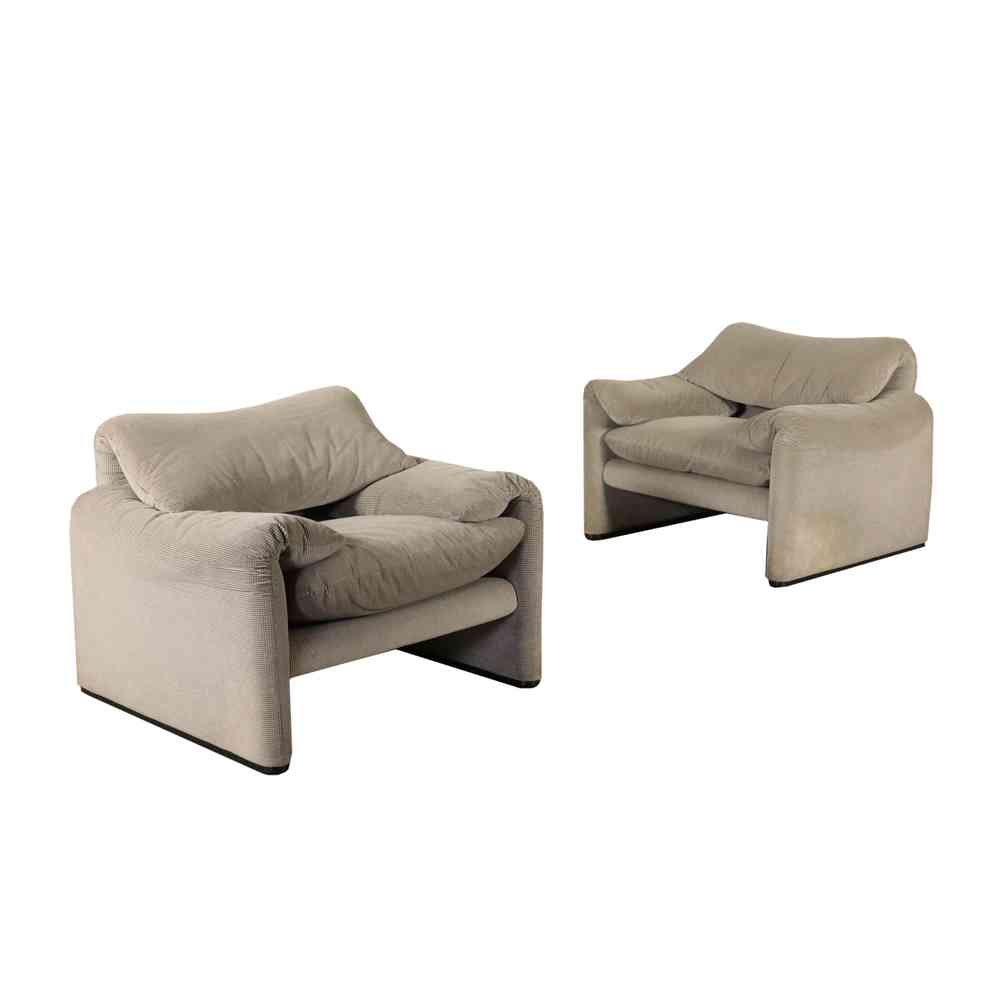 |
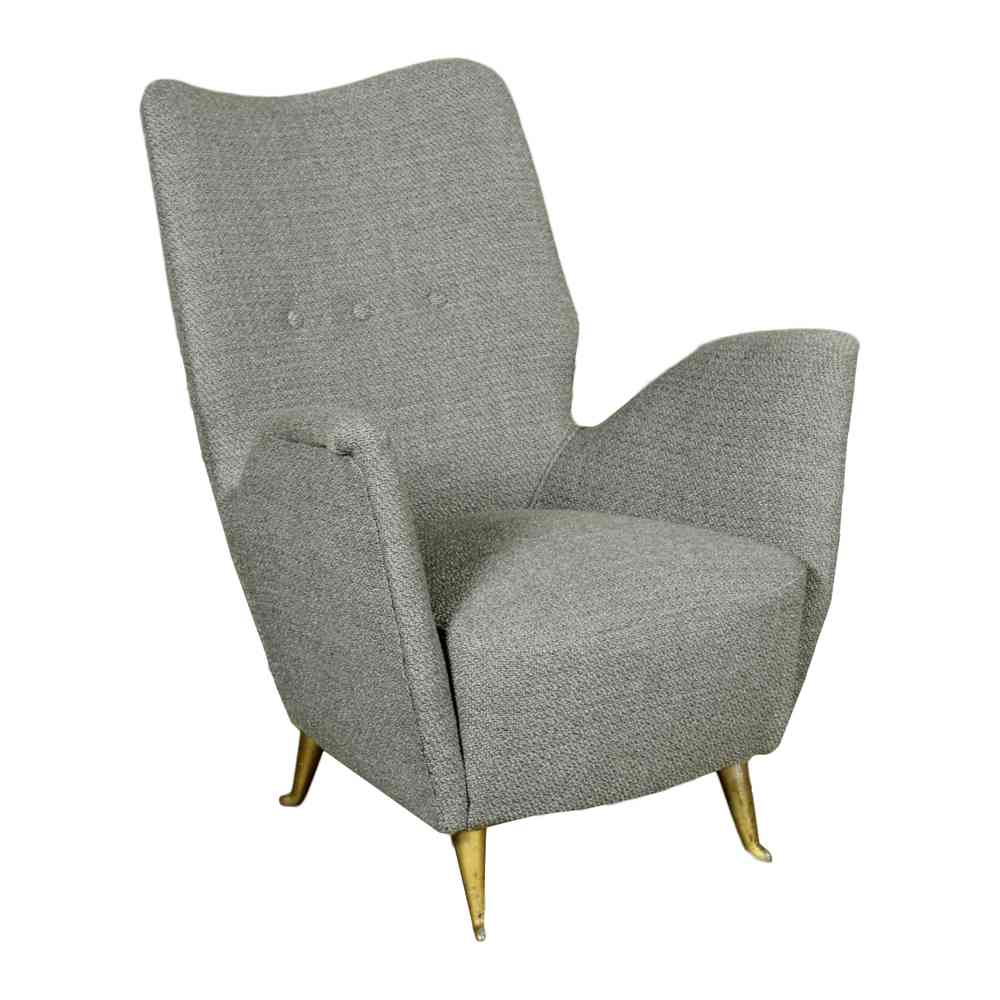 |
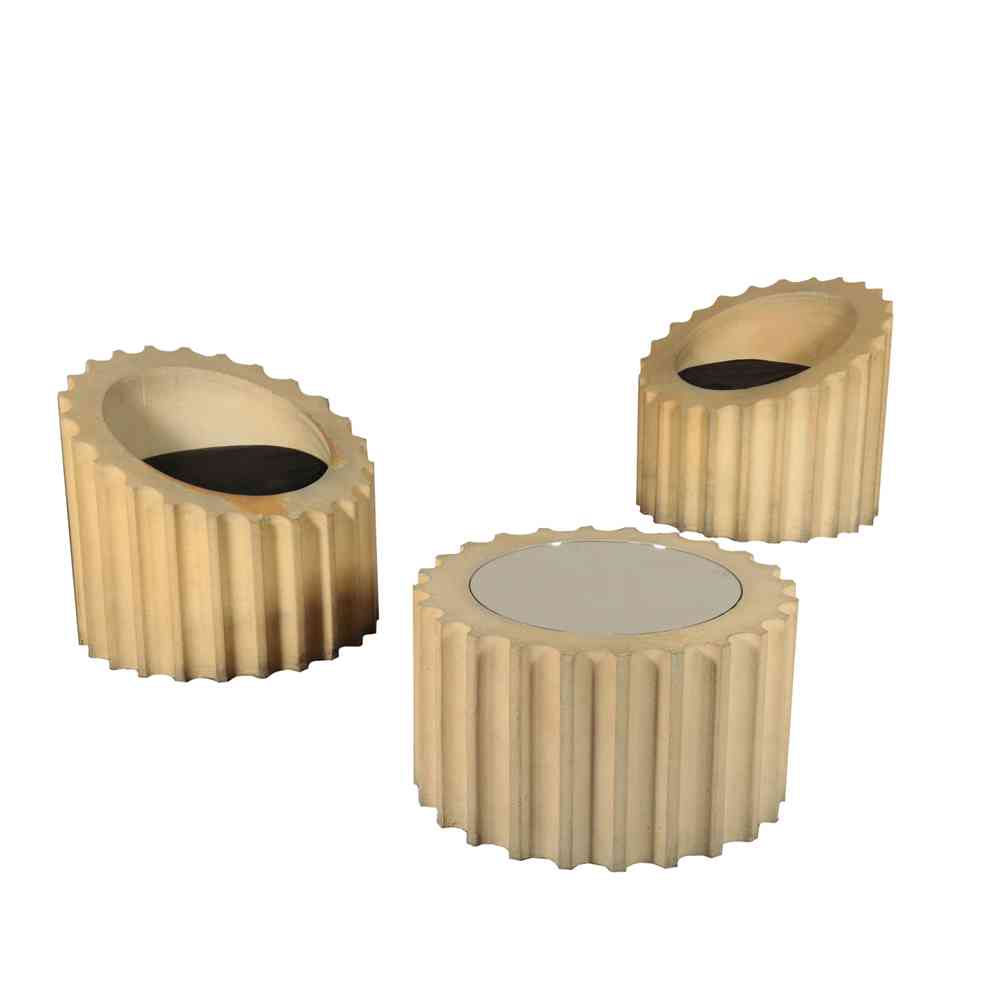 |
Design sofas
The modern antique sofas are also an almost world of furniture. infinite as regards the shapes, materials, innovations, designers and manufacturers that can be identified in the various variations of this product.
The classic 1940s sofa is a classic 1940s sofa. anonymous, in soft padded velvet, with round or conical wooden feet and very enveloping shapes.
On the contrary, in the following decade many designers made themselves known for their experiments and unprecedented ideas. Among these we must mention at least Marco Zanuso, whose sofa 1950s Sleep-o-Matic for Arflex is; one of the first modern sofas to use elastic bands and foam rubber padding. Another contemporary famous design sofa is; the D70 by Borsani for Techno who conceives a modern device to modify its shape.
The 60s design sofa sees the rise of a company outside Lombardy: Poltronova of Pistoia, perhaps the only real exception to the rule that modern antique chairs were all produced in the central-northern region. One of his first productions & egrave; the Zelda, a sofa with a wooden structure and feather padding.
Sometimes research on materials leads to the rediscovery of ancient elements, such as wicker, which gives shape to the modern antique sofa by Tito Agnoli, for Bonacina, from 1962, called P18/2.
A trend of these years & egrave; also that of conceiving living spaces as equipped environments and therefore also the 60's sofa often tries to be an island equipped with all the comforts of contemporary society. of consumption. An example is Adalberto dal Lago's Welcome.
Poltrona Frau in the 60s then produced the Smoking sofa in 1966, based on a design by Sergio Mazza and Giuliana Gramigna, a designer sofa with steel springing and feather padding .
The 70s sofa is often influenced by pop aesthetics, as in the case of the Bocca, by Studio 45 for Gufram, which clearly incorporates the two lips to compose the seats and backrest of a comfortable and eye-catching sofa.
A brilliant idea by Vico Magistretti has produced the sofa from the 80s most popular in the world. beautiful and well-known: Sinbad, for Cassina, in which the padding is replaced by an interchangeable blanket that elegantly rests on the supporting structure.
Modern antique tables and desks
There are various categories of modern antique tables: depending on their shape and the main function for which they are are divided into the classic categories of design console or wall table, design desk and design coffee table. In this paragraph we will therefore go to discover together all that is necessary. what is there? important thing to know about modern antique tables.
Design tables
We can start the history of design tables in 1929, when Le Corbusier presented ; his LC6, the first table to seek a rationalist and modern aesthetic, combining the use of innovative and industrial materials, and envisaging mass production. In fact, the use of a simple elliptical steel tube with a very essential shape taken from the ancient refectory table (two legs in an inverted U shape joined by a central axis) while trying to to transmit many suggestions drawn from the contemporary much of the flight that was opening up to men. For this reason, the glass top of the LC6 by Le Corbusier for Cassina seems to float suspended in the air, giving an impression of lightness very different from the weight of the legs.
Despite these avant-gardes, the 30s tables usually take up the stylistic characteristics of art deco, with voluminous and round lines and briar veneers. In those years, in Milan, he was already working; Osvaldo Borsani, who experimented in the creation of modern antique wooden tables in the family business. A great example of his work is already there; at the beginning of the following decade, a period which dates back to an important table from the 40s ABV presented by FineArt. In fact, the typical 1940s table often takes up the important and sought-after forms of art deco, however, sometimes anticipating the themes that will be developed later, for example with the top in glass. The exception in this sense is Cavalletto by Luigi Caccia Dominioni for Azucena, designed by himself; itself in 1941, and then put into production towards the end of the decade: a very linear and rigorous structure, simple but not banal, practicality; and features; and the search for beauty in minimalism, that is; the sum of all the design avant-garde of those years.
As in many other areas of modernism and design, the real explosion also on tables occurred in the first decade following the end of the world war. In 1951, for example, there are several important 50s table examples: Ignazio Gardella designs the T1 for Azucena, a round table with a wooden top and base in painted iron and adjustable brass feet. Since then, the design round table has been around the world. a must that will come; assiduously attended by all the most important designers to date, see Rabicano a 1950s round table in solid wood designed by Scoccimarro for Adrasteia in 1957. Another important design round table is Rabicano; Nonaro by Luigi Caccia Dominioni for Azucena, with the metal trestle structure and round wooden top, from 1961.
To innovate the shapes and the conception of the 50's kitchen table is the fifties kitchen table. also Franco Albini who, with his TL3 for Poggi, brings the structure very much to the essentials, with the screwed top, which seems to only be leaning on it. Luigi Caccia Dominioni also presents, for Azucena, an exemplary design living room table consisting of a painted iron structure and a glass top contained by chromed bands which is called Fasce Cromate. In this decade, a new protagonist enters almost every Italian home: the formica table from the '50s, usually with slender metal legs, shiny or chromed, which guarantees practicality, hygiene and economy, as well as bringing a touch of color (often the top of these tables is blue or bright red). It is rare to find in this period a design table in this material, however; these products are important for the history of modern art, because; also through them the style of the furnishings changes, adapting the taste to the new styles.
In the 60s the trend was, on the one hand, to continue in the neoliberty line of research, on the other we witnessed the attempt to design design furniture inspired by commonly used furniture, but with perfected shape. A classic table from the 60s is a classic table from the 60s. the T92 produced by Tecno based on a design by Eugenio Gerli and Mario Cristiani: a dining table with a square top that can be enlarged through a very special rotary mechanism and opening wings, all on a painted metal structure. As an example of forms studied starting from structures more; classics & egrave; the beautiful Nibay, by Tobia Scarpa for Gavina, a wooden design table whose solid wood top is made of wood; openable and rotating on a pivot, all resting on a mobile supporting structure. The 60s formica table , however, continues to be very popular. no designer launches into the use of this material, probably considered too popular. One of the most significant design wooden tables of this period was conceived by Mario Bellini and put into production initially by Pedretti and then by Gavina. This 1960s style wooden table deserves a better look. the “Compasso d’Oro” in 1962 because; goes beyond the traditional construction of the table, made up of legs, band and top, making the most of the plywood glued under hot press to obtain a unitary structure.
Even the 70s table follows different stylistic trends. On the one hand, the production in plastic material develops a lot, especially towards very informal lines and designs, such as the 230 by Fabio Lenci for Bernini, in which the oval top is composed of six equal wedges of rigid polyurethane, with the mold of table objects. On the other hand, there is; also a dignified line of classical production of tables, such as for example the line of marble tables from the 70s by Simon, designed by Carlo Scarpa and Marcel Breuer. Crystal also reigns supreme in this decade, there are countless examples of glass tables from the 70s, such as the Ritmus by Offredi for Saporiti and the famous Marcuso by Zanuso for Zanotta, in which the glass top is; hooked directly onto the four cylindrical steel legs. Zanotta demonstrates itself as an avant-garde manufacturer even when it agrees to produce the Quaderna series by Superstudio, in which the white laminated surface of the tables and chairs with an apparently simple design and without stylistic references, it is; covered by a grid that makes it a “democratic surface”. A 70's table in highly sought after and elegant wood is the ideal choice for your home. the Zoarch, by Ennio Chiggio: a round dining table, completely built by assembling elements in solid wood. Another design glass table is; Lunario in which Cini Boeri experiments with an eccentric base pressed in steel to support the oval top. Finally, an example of design table and chairs is; the Boccio, designed by Giotto Stoppino in which the round table is; designed to be combined with its chairs composing a single volume; everything is in baydur.
Modern antique tables
Another great protagonist of the most prestigious houses; stylish of the ‘900 & egrave; the modern antique coffee table. As always, the first examples of modern antique tables date back to the first post-war period. The classic table from the 1930s is; characterized by voluptuous forms in a late liberty or art deco style, with a strong combination of light and dark woods and burl veneers. The 1940s coffee table continues the style of the previous decade, progressively evolving the shape which is streamlined under the influence of structuralist ideas, often also thanks to the use of crystal and glass tops. With the 50s we think much more; about the possibility to mass-produce products, starting from the assembly of simple pieces. Exemplary in this are the living room tables from the 50s by Vico Magistretti for Azucena (later Cassina) in which the individual assembled pieces are deliberately recognizable and make the tables stackable, innovations that earned him the “ Golden Compass” in 1954. The 50's coffee table also takes advantage of the properties; curved plywood, like those designed by Angelo Mangiarotti and Bruno Morassutti, for Frigerio, with a glass top. Other examples of very particular tables from the 50s are the one in rattan, round, with a central hole for the umbrella designed by Franca Helg and produced by Vittorio Bonacina and the 740 by Gianfranco Frattini for Cassina, in which essentiality; and the linearity; the wooden structure is the master.
If possible, in the 60s, the design tables spread even more. We will quickly present here some of the famous design coffee tables, which are useful for knowing the trends of this period. First of all, we must mention Personalità, by Piero Ranzani for Elam: a pair of living room tables from the 1960s with a square or rectangular shape, completely in wood. Iconic is; also the T23 by Ugo Rivolta for Delitalia, a table from the 1960s in walnut, with a curved top as if to contain the objects that will be placed inside. Other very important small tables from the 60s are Acca by Takahama for Gavina, in which a wooden structure takes up the shape of the letter whose name it bears, dominated by a crystal countertop, and Jumbo by Gae Aulenti for Knoll, one of the first examples of 60s furniture in which marble, absent from the furniture scene for years of design, is once again the protagonist. Also beautiful are the Demetrio, small tables from the 60s by Vico Magistretti for Artemide that can be stacked and stacked, molded in reinforced resin.
The clarity and lucidity surfaces distinguish many tables from the '70s: the glass top, resting on a metal frame, is; the main element of Kinsman's T13 and T14 for Bieffeplast. But Shillings is also an expert. a series of tables from the 70s in which the support - this time in the shape of a floating cuboid - is; only the pretext to highlight the mirror surface.
Design lighting
The modern antique lamps are among the objects more sought after and classic by all design lovers. In the post-war years, a very particular attention developed, even before that from the public, from the visionary designers active in those years. Gino Sarfatti, Achille and Piergiacomo Castiglioni, Luigi Caccia Dominioni, Ignazio Gardella, are just some of the most important designers; at the forefront of experimentation and study on the theme of light. Also in the field of modern lamps and design lamps the same applies to the other categories of furniture: the inspirations come from contemporary northern European models and from the revision of past traditions, the novelty it is mass production and the search for new styles also thanks to new technologies.modern antique lamps can be divided into four main categories: lamps wall, or applique, the l< a href="/en/pt5/27/lighting/table-lamp" target="_blank">table lamps or bedside lamps, ceiling lights and floor lamps.
Modern antique applique
The design wall lamps, usually called modern antiques applique, are the field of research and the application of specific lighting technologies. In this context, it paves the way Azucena< /a>, a very exclusive and strictly Milanese company that is characterized by the use of polished brass and blown glass, but also industrial glass, in processes that always maintain the refinement of handcrafted production. An example is the LP5 by Gardella, a wall lamp from the '50 with arm and plate in polished brass and reflector in pressed glass produced starting from 1954. Although the public taste still asked for 40's wall lights with pendants and a more ; archaic, Sarfatti was already at the table; studying appliqué for the living room whose design was linked to a system of illumination that spanned all categories. It is an example is the 191, in production by Arteluce since '51, in which the reflectors of the light already dare; the metal lacquered with various colors. Among the 60's appliques it is worth mentioning the Clio, designed by Sergio Mazza for Artemide, which is the perfect addition to any room. a design wall light with hemispherical light diffusers in white opal glass and nickel-plated brass frame. An important 70s applique is a must. the Quarto, produced by Flos based on a design by Tobia Scarpa, with an elegant and simple metal reflector and transparent polycarbonate diffuser.
 |
 |
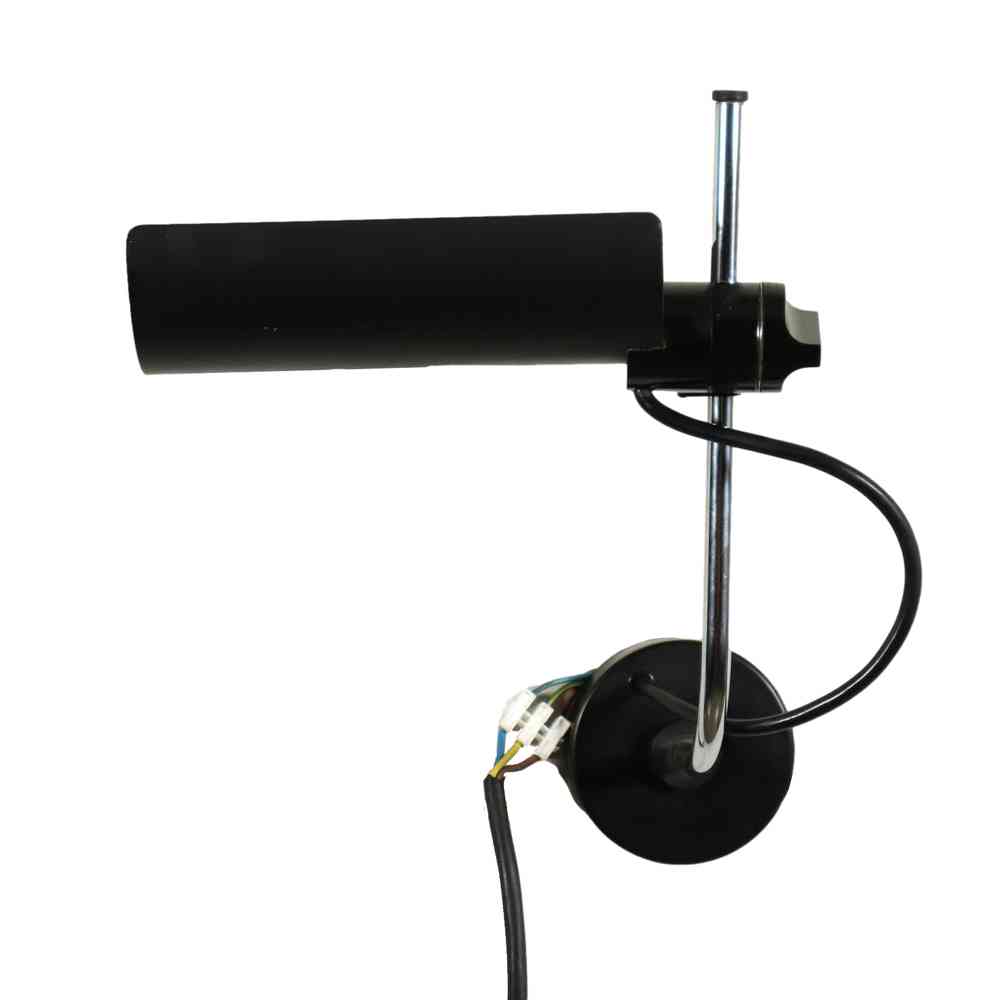 |
Modern antique floor lamps
Already; in the very first the 50s the modern antique floor lamps made themselves known with some forerunner models of the times. Luigi Caccia Dominioni drew; the Lte1 model which is; a fifties floor lamp with polished brass rod, diffuser and base also in brass or aluminum but painted. A particular creation is; the design floor lamp by Sarfatti n. 1050, with an articulated reflector that diffuses the light emitted towards him. The style evolves coherently and among the 60s design floor lamps we find the Papavero, by Achille and Piergiacomo Castiglioni with a round marble top, a linear brass stem and the bulb mirrored to direct the light downwards. In the following decade the floor lamps followed the design of the 70s, imagining new, more modern forms. important and futuristic. It is an example is the Golden Gate, by Nanda Vigo for ArredoLuce, a floor lamp from the '70s in steel that starts from an imposing base and ends with a large arch in which an exposed fluorescent tube makes it master.
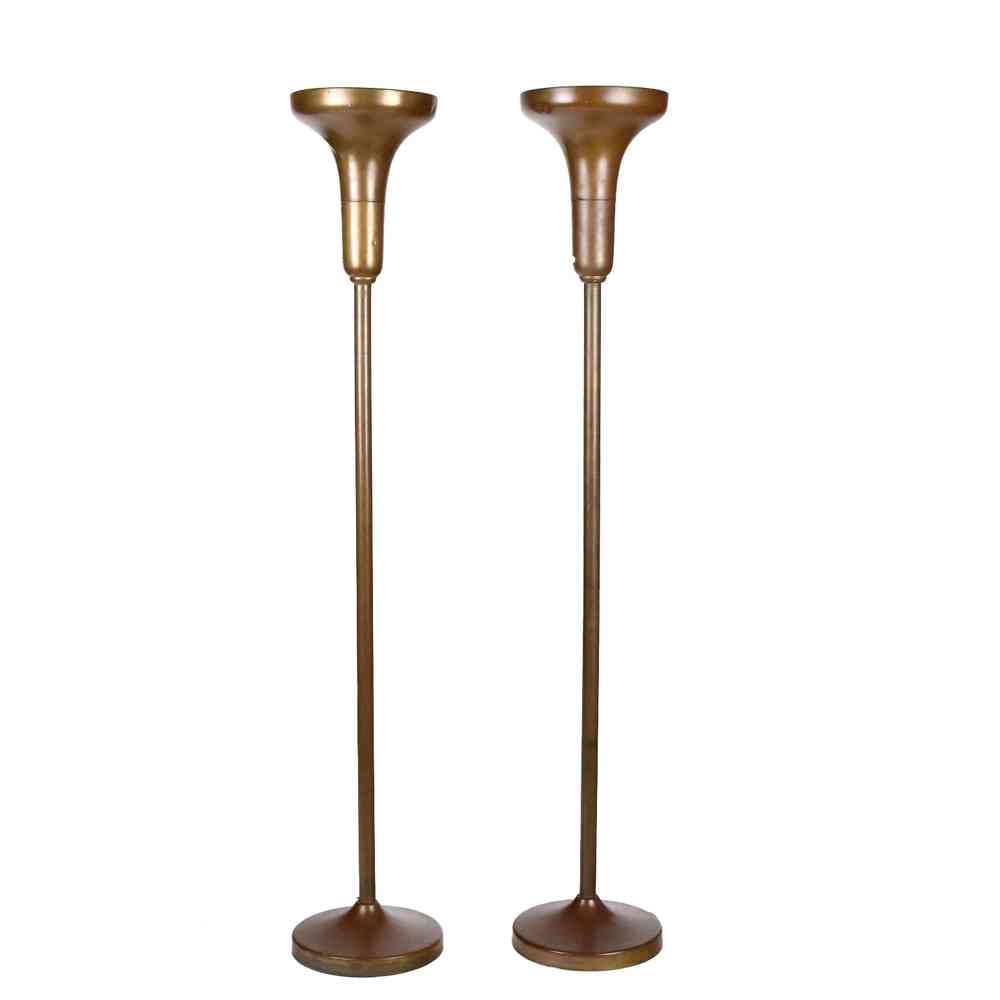 |
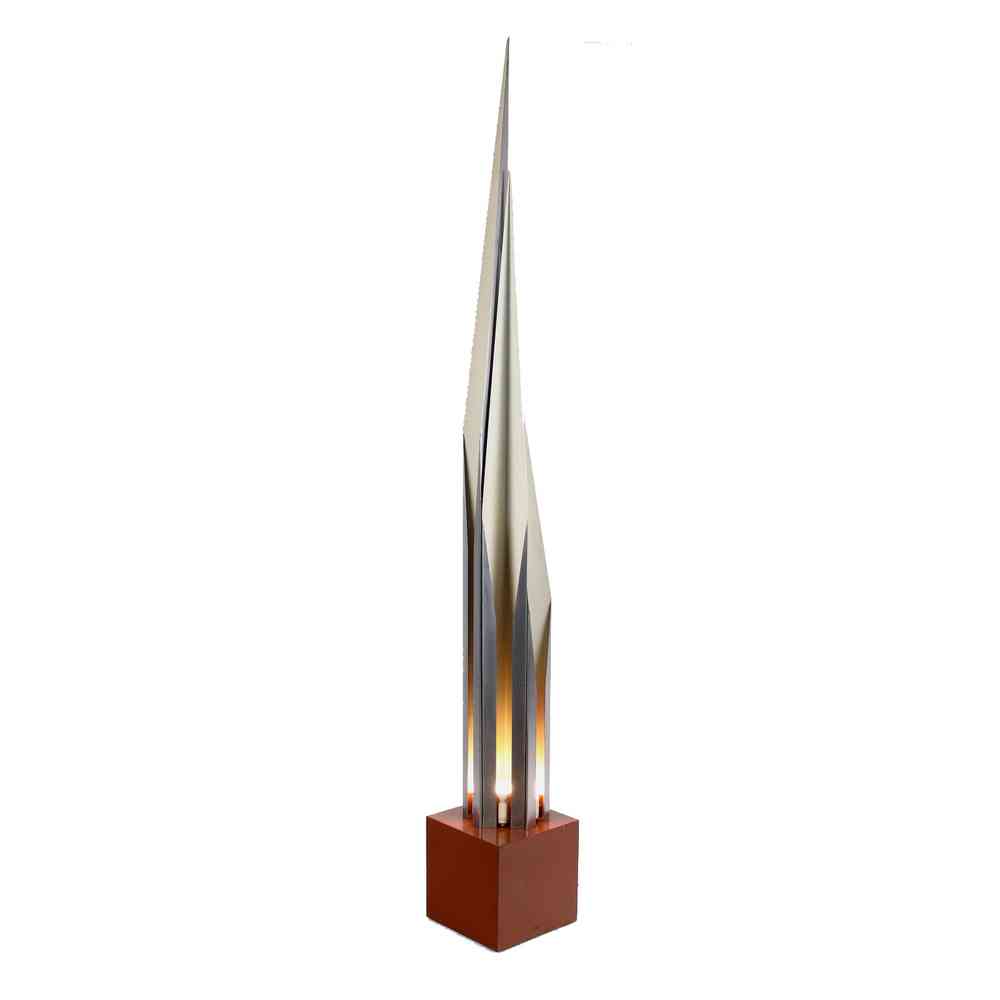 |
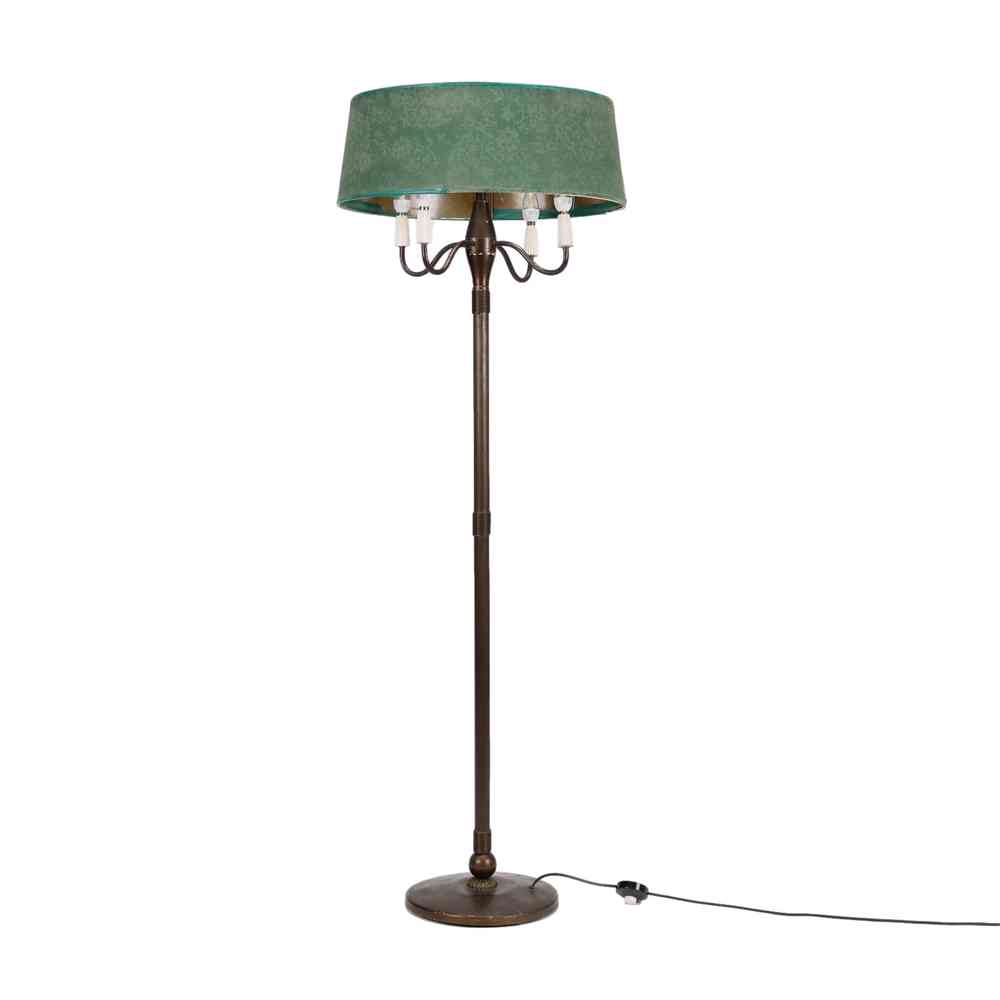 |
Design table lamps
Studies on the design of table lamps, that is to say; those small light sources resting on a surface and easily movable, it already starts; in the 30s. In that decade, it was above all the bedside lamps from the 1930s that dominated, and the most popular models; widespread are in the Bauhaus or art deco style. It is however; in the post-war period, real modern antique table lamps developed, in which the masters of architecture and artistic mass production played with materials and shapes to produce cult objects. Among these could not be missing Ettore Sottsass who, in the ’50s, signed’ for ArredoLuce a design table lamp with a reversible hat and three slender metal legs with a rounded base.
Curious – the history of Flos, which was born from the experiments of Eisenkeil of Merano on cocoon, an innovative plastic material for the diffusion of light which took shape in the table lamps of the 60s called Taraxacum em>, Viscontea and Gatto even before the birth of Flos table lamps. This company immediately in collaboration with two great masters, Achille and Piergiacomo Castiglioni, put into production in 1962 the designer table lamp Taccia, with indirect light, adjustable glass diffuser and reflector and base in painted metal.
In the following decade, then, the famous designer table lamps abound even more. To begin with, we can mention the Frine, a table lamp from the 70s with valve screens which, if closed, completely obscure the light source but, when opened with an electric at mo’ of flower petals, reveal the spherical opal glass diffuser. The table lamps of the 70s then resort to the expedient of keeping a flexible arm in order to direct the flow of light, such as the Hebi by Hosoe for Valenti and the 993 , by Pia Guidetti, for Lumi. In the same period Sarfatti is one of the first to design a 70s bedside lamp that works with a 12-volt halogen bulb: it is a 70s bedside lamp that works with a 12-volt halogen bulb. the 607, produced by Arteluce. Also in this period, Achille Castiglioni creates real collector's items with some Flos table lamps from the 70s, such as the Lampadina, a lamp that can be used as a lamp. also be mounted on the wall and which consists of a metal base that supports a large partially frosted bulb bulb.
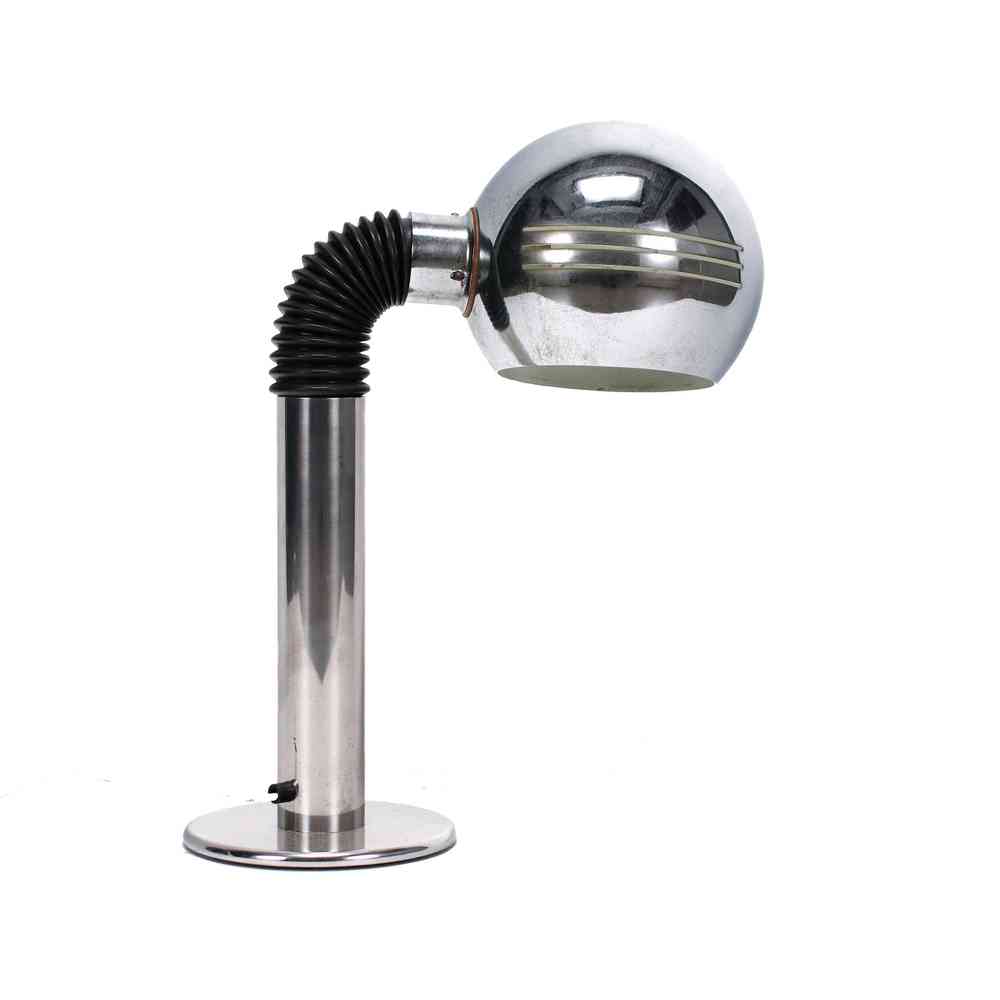 |
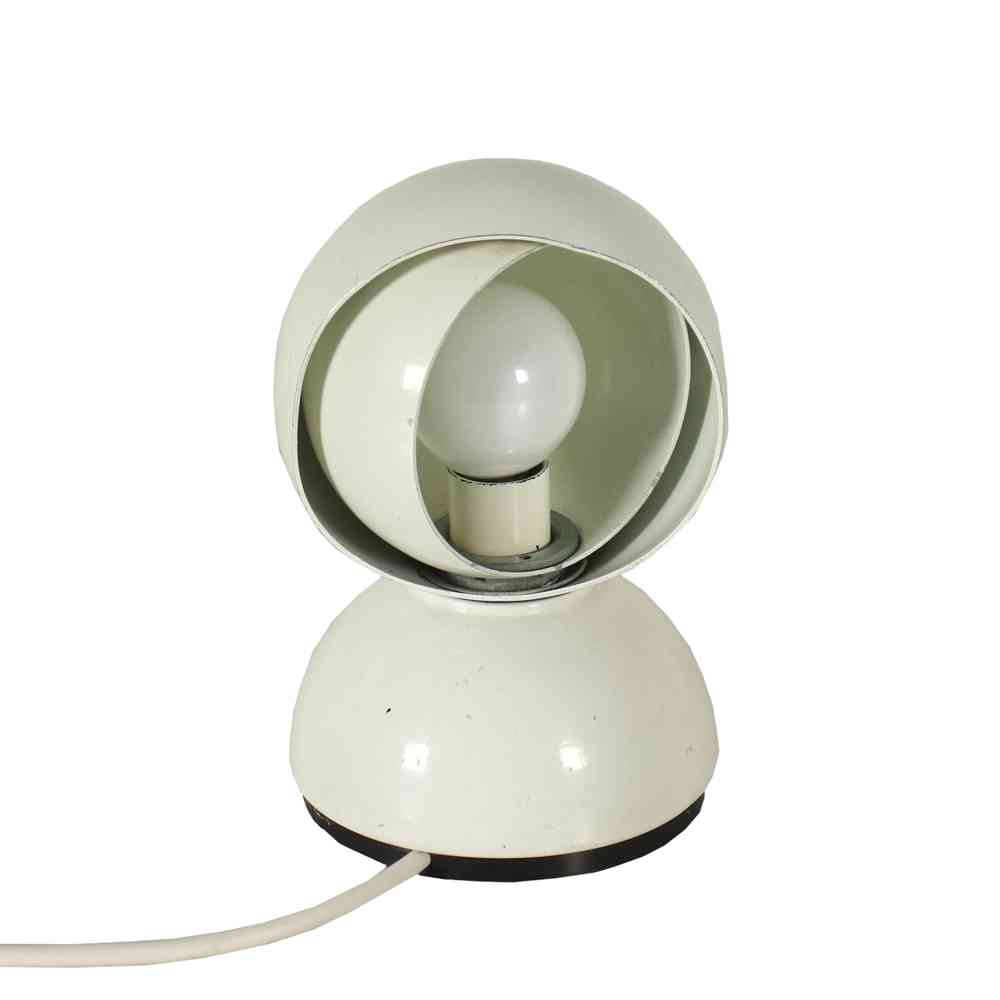 |
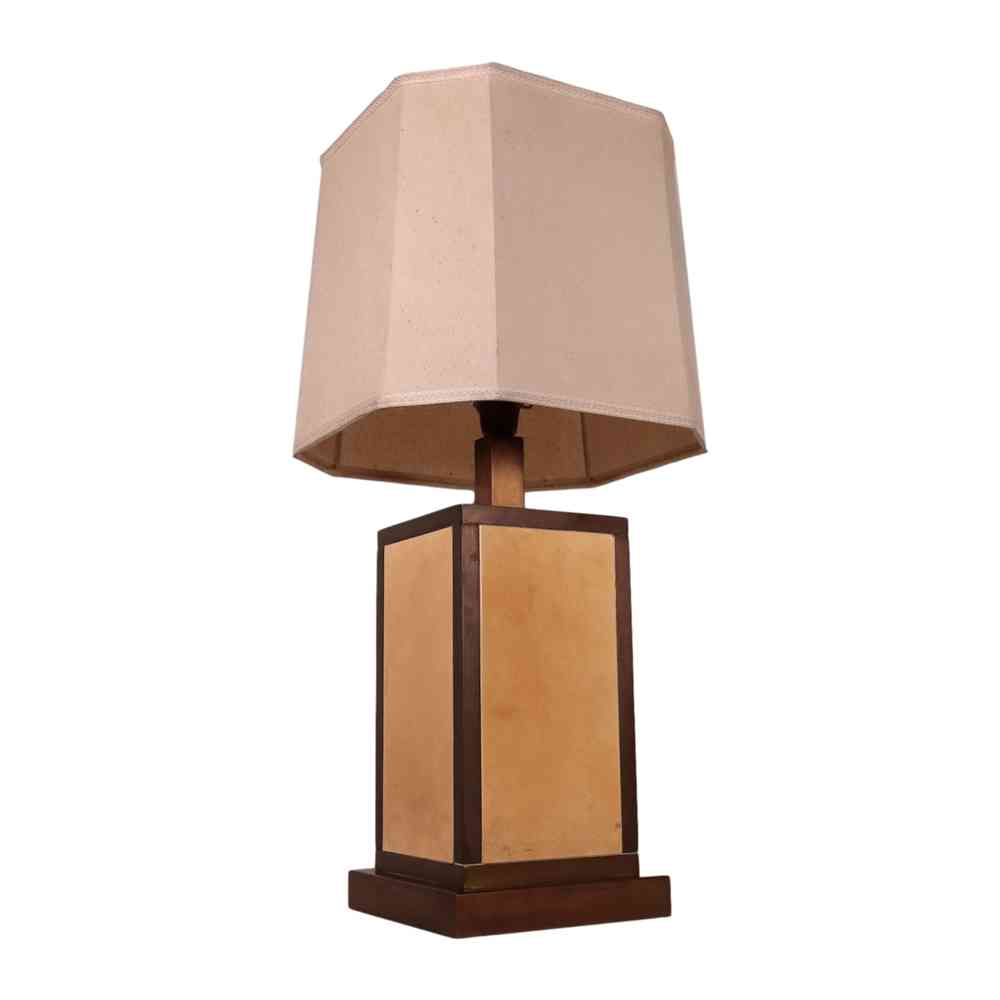 |
Design chandeliers
Even among designer chandeliers the designers of the glorious era of modern antiques indulge themselves in the search for new forms. There are design ceiling chandeliers that take up and modernize more traditional styles; ancient, for example & egrave; impossible not to notice the mention of the classics drop-shaped chandeliers in the beautiful modern antique chandelier by Gino Sarfatti, for Arteluce, from 1958 in which numerous visible bulbs resting on delicate removable arms recall the previous forms. However, there are obviously modern antique chandeliers with very different structures, such as the Triclino by Vico Magistretti for Artemide in which the brass structure supports three diffuser globes in opaline glass white. Also in this case Flos becomes avant-garde in experimenting with materials with some design ceiling lamps signed by Tobia Scarpa in 1963: the Fior di Loto, completely in brass, the Nuvola, in cocoon, and the Nigritella, in metal and crystal. In the 1970s the modern antique chandelier was introduced. once again designed according to the properties; of the new materials: emblematic is the; the case of the Lampenudo in which the protagonist is; the fluorescent tube, which appears suspended and free in space.
- - Lampada “Eclisse”, disegnata da Vico Magistretti nel 1965 per Artemide
- - Lampada “Arco”, progettata da Pier Giacomo Castiglioni e Achille Castiglioni nel 1962 per Flos
- - Poltrona “Sacco”, disegnata da Gatti, Paolini, Teodoro nel 1968 per Zanotta
- - Chaise Lounge “LC4” disegnata da Le Corbusier, Pierre Jeanneret e Charlotte Perriand nel 1928 per Cassina
- - Lampada “Parentesi”, disegnata da Achille Castiglioni and Pio Manzu nel 1971 per Flos
- - Sedia “Tulip”, progettata da Eero Saarinen nel 1958 per Flos
- - Sedia “Superleggera”, progettata da Gio Ponti nel 1955 prodotta successivamente da Cassina dal 1957
Questi sono solo alcuni dei pezzi iconici del ‘900. Nei nostri magazzini sono passati tutti questi oggetti, ma non solo! Giornalmente studiamo ed esponiamo tantissimi altri arredi anni ‘30, ‘40, ‘50, ‘60, ‘70 e ‘80. Scoprili tutti nel nostro catalogo online e nei nostri negozi di Di Mano in Mano Milano e Cambiago.
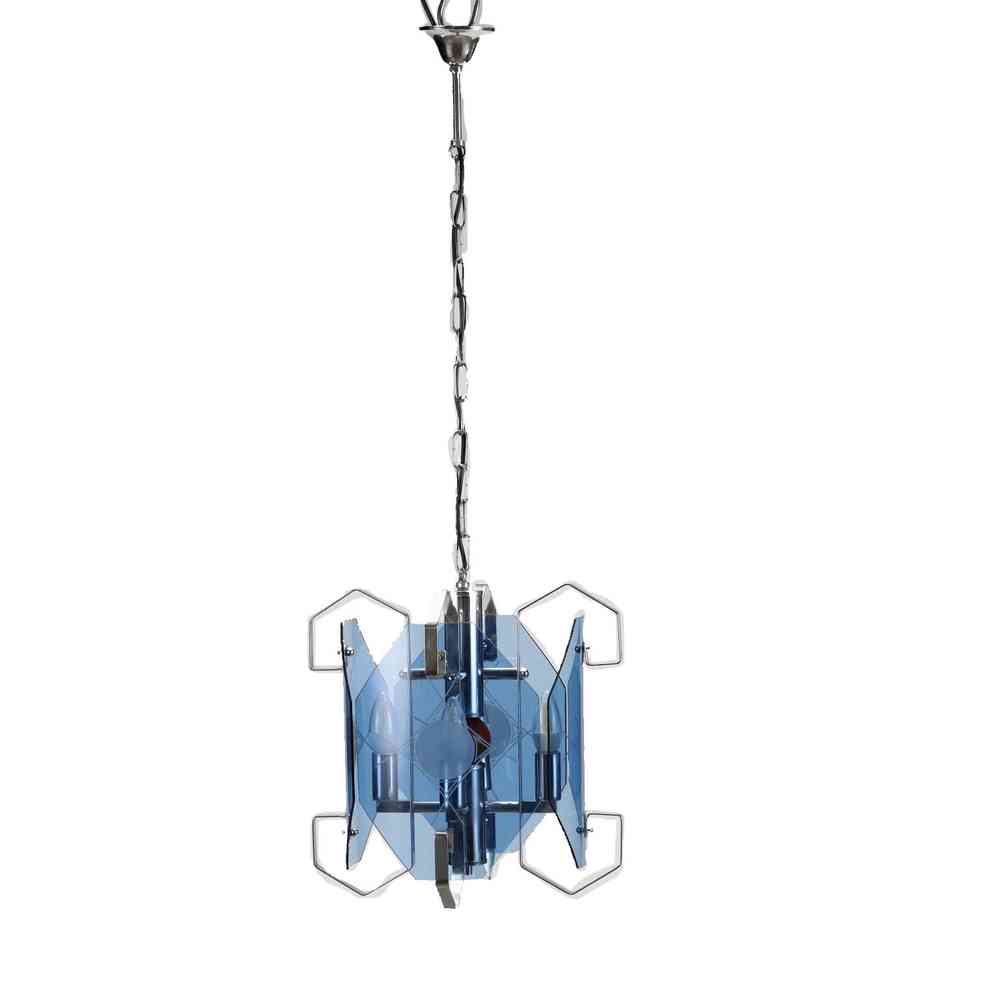 |
 |
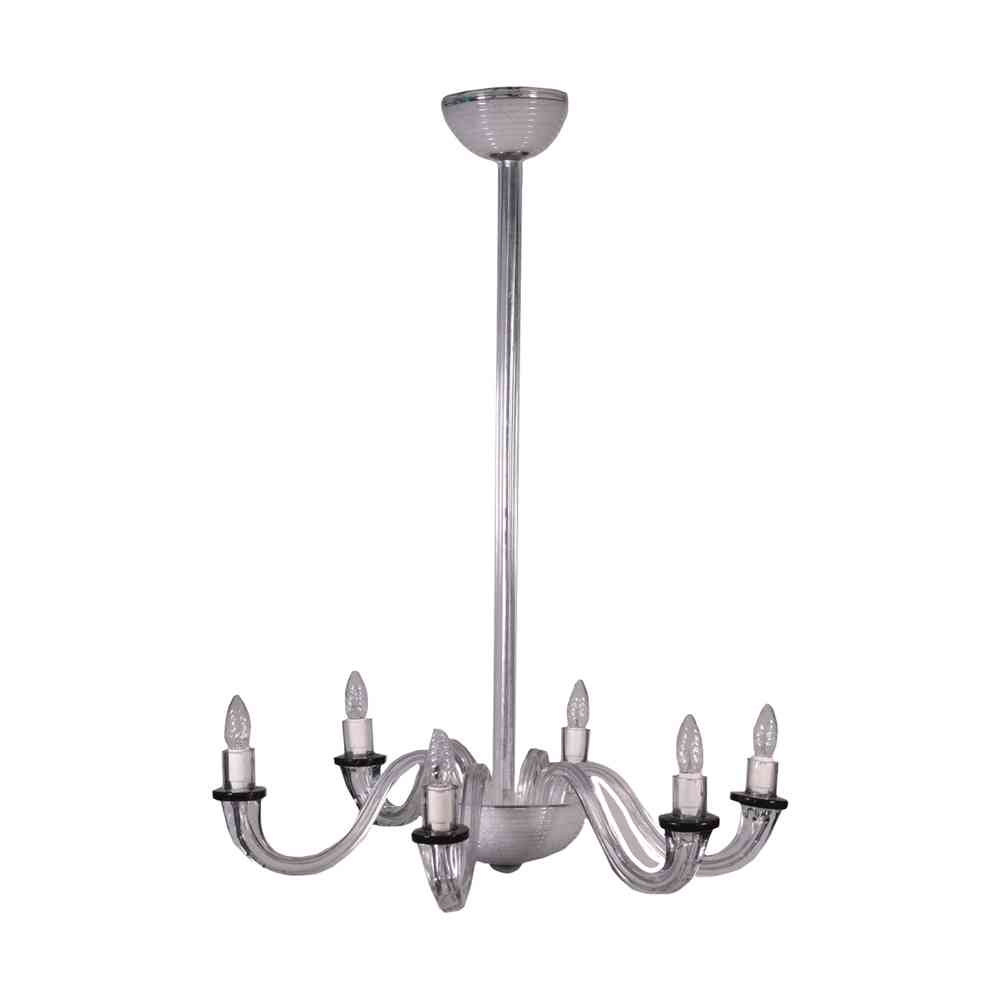 |
What are the best years in the history of design and modern art?
Initially the concept form = function reigned supreme. In the the ‘60s democratic design was born; the homes of millions of people are colored thanks to the plastic that allows you to create new shapes, unthinkable until then. The the 70s were a period of great social achievements and significant changes in the way of communicating, dressing and furnishing. The desire to provoke and amaze is affirmed through eclectic and extravagant, choices made possible also thanks to established production technologies. Over the years, furniture and design objects have been produced which have become true icons. Some of the most famous are:
The ‘30s and ‘40s
The characteristic style of the furnishings of the '30s and '40s is; the art deco style, which we could define with the intermediate style between antiques in the strict sense of the word and modern antiques in all respects. The art deco style; takes its name from the International Exhibition of modern decorative and industrial arts (Exposition internationale des arts décoratifs et industriels modernis) in Paris in 1925. This style develops in contrast with the previous one, the < a href="https://notizie.dimanoinmano.it/?s=stile+liberty" target="_blank">liberty style, characterized by curvilinear and floral designs, inspired by nature. Also for this reason the art deco & ograve; he prefers wide curves and geometric designs, zigs, zags, lively and brilliant colours, glossy and precious covering materials, being mainly a < u>decorative style. The materials used in the art deco furniture of the 1930s; they are very varied such as metal and ivory inserts, snake and crocodile skins, resistant glass, briar of various types of wood and jewels. Recent archaeological discoveries and the broadening of the cultural horizon led the inspiration of the 1930s furniture to favor ethnic, from Africa, ancient Egypt as well as from the Far East.
The cultural climate of those years was; well represented by the famous book “The Great Gatsby”: there was the desire to leave behind the horrors of the First World War and enjoy life also thanks to new modern inventions: skyscrapers, planes, radios… The music that well represents this climate and goes perfectly with the 30s home decor of those years is the perfect choice. jazz music.
In these circumstances, in fact, some new types of furniture were conceived , related to the different modern lifestyle, for example the furniture for the radio and the gramophone and the 1940s wet bar also called the cocktail cabinet. It was mainly furniture produced in limited series starting from the design of famous architects.
In Italy, as far as architecture is concerned, this style became the most popular. characteristic of the fascist regime. As for the home furnishings of the 1930s, the "Milanese Triennale" was established, until today the main exhibition of innovations in the world of design and the national furniture industry. In fact, already; before the Second World War, Milan became the capital of industrial design thanks to the work of some renowned masters, such as Gio` Ponti, who collaborated with the with the La Rinascente warehouses and founded; the magazines Domus and La casa bella which since then, especially the first, have been the privileged places of debate on design up to today. At Giò Ponti we owe some beautiful 40s chairs as well as 40s tables which were an anticipation of the style that developed in the in the following decade.
Typical of that period are also the 1940s armchairs and the 1940s sofas: huge, soft, enveloping and with showy decorations. The rooms from bed art deco; are characterized by petineuse with mirrors large and drawers lateral with light colors and brass inserts and decorations, night tables from the ‘40 voluptuous and curvilinear, spacious and refined, and cannot be; missing a 1940s wardrobe with briar veneer, inserts in ebony and precious essences and noble metals, such as brass.
The decline of art deco it was due, among other factors, to the large-scale diffusion of mass production, which made him lose that aura of exclusivity; which made him very attractive. Thus, the ‘40s style furniture left a sense of style. room for greater austerity; stylistic and productive linked to the war. An example of an extremely avant-garde armchair from the 1940s and a forerunner of themes and styles that will remain in vogue for the entire following period, being today considered classics, is the perfect example of a armchair from the 1940s. the trestle armchair called Ca 832 with crossed wooden legs designed by Franco Albini for Cassina already in production; in 1946.
Then in the 60s there was great interest and a revival of the< strong>1930s-style furniture and 1940s-style furniture in that period the term art deco was mainly used, which the coevals also knew as “1925 style” or “modern aerodynamic” style.
The ‘50s
The 50s , in Italy it is the period in which some trends that began immediately after the war, in the midst of the reconstruction, and which will give rise to the beautiful furniture of the 50s. In those years, the culture of design and the Italian architects still proceeded in “scattered order” in developing projects and new concepts. In particular, the main innovations in the field of industrial design, understood as the search for beauty in mass-produced products, are found more in the world of “new” mechanical products: such as Vespa and Lambretta, typewriters Olivetti and the Cisitalia berlinettas. The50's furniture struggled; a little to find a fertile environment and a market demand because; the taste of the masses, at the beginning of that decade, was still linked to more modern furniture; classics. Despite this, already; in the early '50s & egrave; noteworthy is the production of visionary architects such as the already; cited Giò Ponti and Franco Albini, but also Marco Zanuso, who, freely inspired by the “Scandinavian style” which was already in place. established in northern Europe and America, they paved the way for the extraordinary Italian 1950s furniture. Where can you witness such wonder?
What a trivial and, to say the least, obvious question, is it; Of course you can find it with us, through our used Scandinavian furniture. Even now, having a 50s-style home is a must. synonymous with an elegant and refined style, which is appreciated all over the world. Very important in those years was the establishment by the La Rinascente of the prize “The Golden Compass” which, starting from 1954, was awarded to industrial products with the most high artistic value. In any case, progressively throughout the 1950s, the influences of Northern European style and new lifestyles opened the doors and homes of Italians to the new products of industrial design, which slowly made their way into homes and tastes of the Italians and which are still sought after as vintage 50s furniture.
A notable example of vintage furniture from the 50s is; the Luisa armchair, also designed by Albini in 1950, with a rosewood structure or walnut and upholstered seat and back. Remaining within the sphere of 50s modern antique armchairs it is very important to note the great technical innovation of these years with the introduction of foam rubber to replace the old padded one, introduced by < u>Marco Zanuso for Arflex, in collaboration with Pirelli, and derived from studies for automotive interiors, for example the Martingale which incorporates the lines of the Fiat 1400. Then there are countless examples of 50s armchairs that rest on light and sinuous legs, in curved wood or metal and have an enveloping and super comfortable style, above all the production of Osvaldo Borsani for Tecno- a company born with the vocation of using innovative materials such as rubber, synthetic rubber, cast metals, all processed with cutting-edge technology.
The 50's sofa follows a bit from the modern style. the same style as the contemporary design armchair: the Cassina company also distinguished itself in this, often based on designs by Giò Ponti, like the upholstered sofa< /a> without armrests called 852.
A great classic of this decade is; the round table from the 50s, for example the table with a monopod iron structure that looks for the minimum amount of space to support the round wooden top, by Ico Parisi for Xilografia Milanese , from 1954. Even in the living room tables of the 50s the search for new essential but elegant materials is revealed as in the coffee table Mangiarotti and Morassutti from 1952 with curved plywood legs and glass top. One of the many relatively recent types of modern antiques from the 50s that reigns supreme in these years is; then the 50s desk of which Gianfranco Frattini for Bernini he made; an iconic variation in the form of a writing desk in walnut or jacaranda with roller shutters and drawers.
Luckily for us, we can still see the modern antiques of the 50s.
The ‘60s
The 60s are an extremely fertile period for design. There is a very strong fervor on the part of designers and architects in creating new products, welcomed by an equal availability; of the producers in making them and a great enthusiasm from the public in receiving them in their 60s-style home. The debate itself on ideological aspects, methodological and aesthetic aspects of design – fervent and even harsh, at times, but all this is very beneficial to development and excellence of the 60s furniture. You can say that civilization; of the design that is; having been formed since the immediate post-war period, it reaches full maturity here (G. Gramigna, Repertorio del < u>Italian design 1950-2000 for home furnishings, 2002). Above all, plastic materials are at the center of the debate on 60s design: how is it? better to use these new materials? What new forms is there? possible to get? How to adapt or modify previous forms by making the most of the potential of learning? any new materials? Leader of this sector is; undoubtedly the Kartell company, whose key points are plastic material, industrial design and production technology and constantly manages to create objects of high quality and style. The guiding idea of 60s furniture is that of radically rethinking the environments inhabited by man: home, office, but also the interior of the car, according to coherent if not exactly unambiguous formal logic. This is how they are produced; visually simple pieces that however; they cost years of studies and experiments to match the material, aesthetic, economic and productive needs. This great added value then generates the well-known vintage 60s furniture. The example of the 60s design chair designed by Zanuso and Sapper for Kartell completely in plastic and stackable for children, called K1340.
Another very important company that sees the light in this decade is; Artemide, founded by Ernesto Gismondi and Sergio Mazza, who collaborated with the in an exemplary manner with numerous designers. Among the most important we must at least mention Vico Magistretti, Livio Castiglioni and Gae Aulenti.
Is not serious; however; the history of modern antiques wooden furniture should not be overlooked either, which in any case sees the production of very important and numerous pieces of design in this decade. The brands that mainly dominate the scene are those already in the market. active in previous years: Poggi, Gavina, Tecno, Cassina. Even if they remain faithful to wood as the main material of the furniture, the spirit of initiative, the genius of the production, the novelties, the new forms are certainly not lacking. There are numerous designers who collaborate with these companies: Giovanni Michelucci, Sergio Cammilli, Osvaldo Borsani, Tobia Scarpa, Franco Albini, Carlo de Carli, among many others.
It is at the beginning of this decade the Salone begins to be held in Milan del Mobile, which still receives great attention today and allows you to exchange ideas on furniture design and on design furniture in general.< br />
Research in 60s design furniture goes very much in the direction of simplicity; formal, and also of modularity. They try to build 60's bookcases composed of modules that can be assembled together adapting to the premises and the needs of the users. There are however; also design sofas.
The ‘70s
A very important recognition to Italian design arrives in this decade, but it is; referring above all to previous years, from Museum Of Modern Art in New York which, in 1972, celebrated the Italian Look with an exhibition entitled “The New Domestic Landscape” dedicated precisely to high quality; and the artistic value of the products that are known today as Italian modern art. Also for this reason, living in a 70s-style house is a must. certainly an added value to the quality; of life.
The socio-economic context of the 70s was characterized by stagnation, the oil crisis and social tensions, but this has not necessarily inhibited research and creative impulse, indeed. At least as regards 70s furniture and vintage clothing this decade corresponds to a renewed expansion of production. You can to say that in the early years the experimentation and research of new materials took place even a little; to the detriment of technical accuracy, while towards the end of the decade the qualità productivity rises a lot.
I designers are more and more; integrated into companies and into the production process, and pay close attention to the real areas of use of objects from the 70s.
To dictate the style more; of others in the modern antiques of the 70s is; probably Ettore Sottsass, but, in general, one can; to say that aesthetic research is affected by the climate of social rebellion that has already begun; in the second half; from the 60s.
Generally speaking, 70s home furnishings follow the principles of modularity; with a taste for strong, bright colors and relatively bulky dimensions.
Which are the most popular? great designers in history?
As mentioned, the history of modern-day furniture as well as modern-day objects is a long-standing story. was made above all thanks to the genius & agrave; of some great designers. These personalities; have been able to combine new production technologies with the search for beauty and functionality; required by the new lifestyle. Surely, it is; also thanks to the inspirations and work of these architects or designers - as they were called and who we know today as designers who Italian style has achieved the fame and recognition it enjoys today in the world. Before presenting that golden generation of teachers who were born in the first decades of the last century, trained at the Milan Polytechnic in the 1930s and worked in Milan after the war, it was necessary to present the golden generation of teachers. It is necessary to make an introduction by briefly outlining those international artists who have paved the way for new production concepts. Here, then, is a brief overview of the most important ones; great designers of international modernism:
- • Le Corbusier (Switzerland 1887 – France 1965): born Charles-Edouard Jeanneret, but universally known by his stage name Le Corbusier, was the name of Le Corbusier. one of the architects who most; have influenced and innovated design in the 20th century.
- • Arne Jacobsen (Copenhagen 1902 – 1971): Among the pioneers and masters of Northern European design, which subsequently inspired, at least in the very early post-war period, Italian design< /strong>, there is; Arne Jacobsen.
- • Marcel Breuer (Hungary 1902 – New York 1981): He worked; always in the world of architecture and design and was very important for the italian design because Dino Gavina in the 60s, with his company, put his design furniture in tubular steel from the 1920s.
- • Charles Eames (Saint Louis 1907 – 1978): It was; He was undoubtedly one of the founding fathers of modern design, having paved the way for new forms, the use of new materials and above all for having brought the concept of unity into vogue; of shape, material and process, currently very consolidated in the world of design.
- • Eero Aarnio (Helsinki 1932 – alive): It was a great success. a still living Finnish designer who contributed to the innovation of design history. His most important creation is important is; the ball chair: a very symbolic armchair that is from a truncated sphere.
- • Philippe Stark (Paris 1949 – alive): ` a brilliant, famous, provocative and prolific designer. In his life he has designed very different objects: from juicers to spaceships, from skyscrapers to smartphones, he is said to have completed more than one project. of ten thousand creations.
- • Gio` Ponti (Milan 1891 - 1979): He graduated after World War I and immediately began working for Richard Ginori. This company allows him to completely redefine the style of his productions, thus; the ceramics Giò Ponti also won international recognition at the 1925 Paris Expo.
- • Ettore Sottsass (Innsbruck 1917 – Milan 2007): He was an important designer active from the end of the Second World War. He too was very eclectic, he dedicated himself; both architectural works on buildings and the design of everyday objects such as vases and calculators. His style is; very provocative, in line with the climate of rebellion and the desire to break taboos; from the 70s and 80s.
- • The Castiglioni brothers (Livio, Piergiacomo and Achille): Sons of a Milanese sculptor, all three brothers studied at the Milan Polytechnic and founded a design studio from which Livio soon left, leaving the studio in the hands of Achilles & Pier Giacomo Castiglioni. Then when Achille Castiglioni died in 1968, to carry on for longer; of twenty years still the study is; Achille Castiglioni.
- • Marco Zanuso (Milan 1916 – 2001): Also the main data of the biography of Marco Zanuso place him in that environment that has given so much to the world of design and modern art. Like the Castiglioni brothers and Giò Ponti was born in Milan, studied; at the Polytechnic and led there; his activity; work.
- • Gae Aulenti (Palazzolo della Stella UD 1927 – Milan 2012): Gae Aulenti also graduated in architecture at the Milan Polytechnic and subsequently engaged in the design and in theoretical research on the themes of aesthetics, also with the direction of specialized magazines.
- • Osvaldo Borsani (Varedo 1911 – Milan 1985): Osvaldo Borsani is also part of the long list of great masters of design who grew up in the first half of the 20th century. of the 20th century in the Milan area, graduating in architecture from the Milan Polytechnic. Start working already; in the 1930s in the family furniture company, designing art deco furniture. In the 1950s, he also founded the Tecno company, renowned for its attention to technology in the design of furniture, mainly for offices.< /b>
How the sale of modern furniture works
Frequently due to the need or desire to change the style of the furniture , or when moving house or after receiving an inheritance, you decide to sell design objects or sell modern antique furniture. Nowadays, the channels and methods of communication have multiplied. technologies for the online design furniture sale, however; is not serious; it is not at all easy to know how to enhance and offer one's modern antiques furniture for sale: one risks wasting a lot of time and putting effort into activities; which are not effective. The platforms and ways of working are multiplying. of online sales of design furniture and it is; almost impossible to get out of it. We at Di Mano In Mano offer you simplicity, reliability and the reliability of the product. and the expertise of those who have been working daily in the world of design furniture sales for many years to support you in the design furniture sale process. You can contact us in any way to sell designs online: call us, write us via email or via WhatsApp, fill out the form on this page, visit us in ourmodern antiques shop. Once we have received the photos of your antique furnishings, we will evaluate them and make you a purchase offer. From hand to hand is; undoubtedly the best choice; convenient to sell design.
Can I rent modern furniture?
Many times it can be changed. be there the need; to use modern furniture for a short time, such as for an event or a film shoot, however; you are not; interested in buying it. It is in these cases that is; it is better to choose rental of modern furniture. If, for example, you want to organize a event in 50s style, or you want to give a vintage reception in a 60s style house, or you are setting up a theatrical performance set in the years of the economic boom and you want an original scenography , or dream of a wedding in 70s style, in Di Mano In Mano you can easily rent modern furniture and design objects for the time you need.
Is it possible to have financing for the purchase of modern furniture?
Yes, we have activated the possibility of padding. to obtain financing for the purchase of modern antique furniture directly online. You can calculate the cost of furniture financing directly from our design online shop by choosing the furniture purchase financing option after entering the product your interest in the cart. Find out all about antique financing on this page.
How does the restoration work on modern antique furniture?< /em>
Both in the purchase phase and for modern antiques already in your possession, Di Mano In Mano offers you the service of modern restoration. From more ten years ago we have also opened a complete Milan furniture restoration workshop in which six expert partners work and about ten collaborators who have learned the restoration of furnishings modern art, a sort of vintage modern art refurbished. For several years, we have also been carrying out the restoration of chandeliers, to put them back into operation and safety. We are also equipped for renovation upholstery< /a> modern antique chairs, with availability; of many types of fabrics, colors and textures.
How does the packaging, shipping and delivery service for modern furniture work?
In Di Mano in Mano we are equipped and organized for the shipping and delivery throughout Europe of our modern antique furniture. At the time of purchase, choose whether you prefer to rely exclusively on the disassembly and packing service or if you prefer to use one of the couriers we work with for shipping. Or, if you want, we can directly deliver and assemble the modern furniture that you have purchased at us. Contact us by WhatsApp, e-mail, or give us a call!

